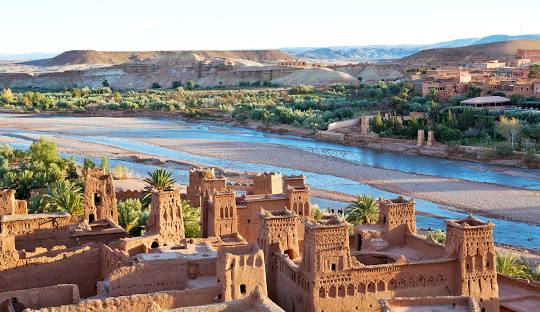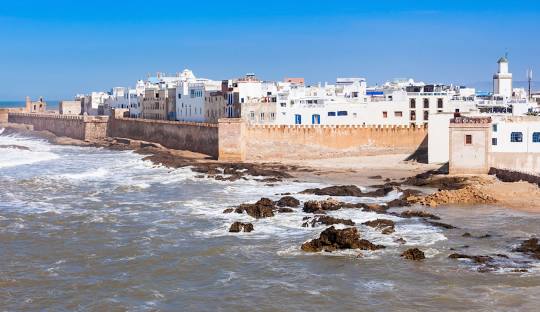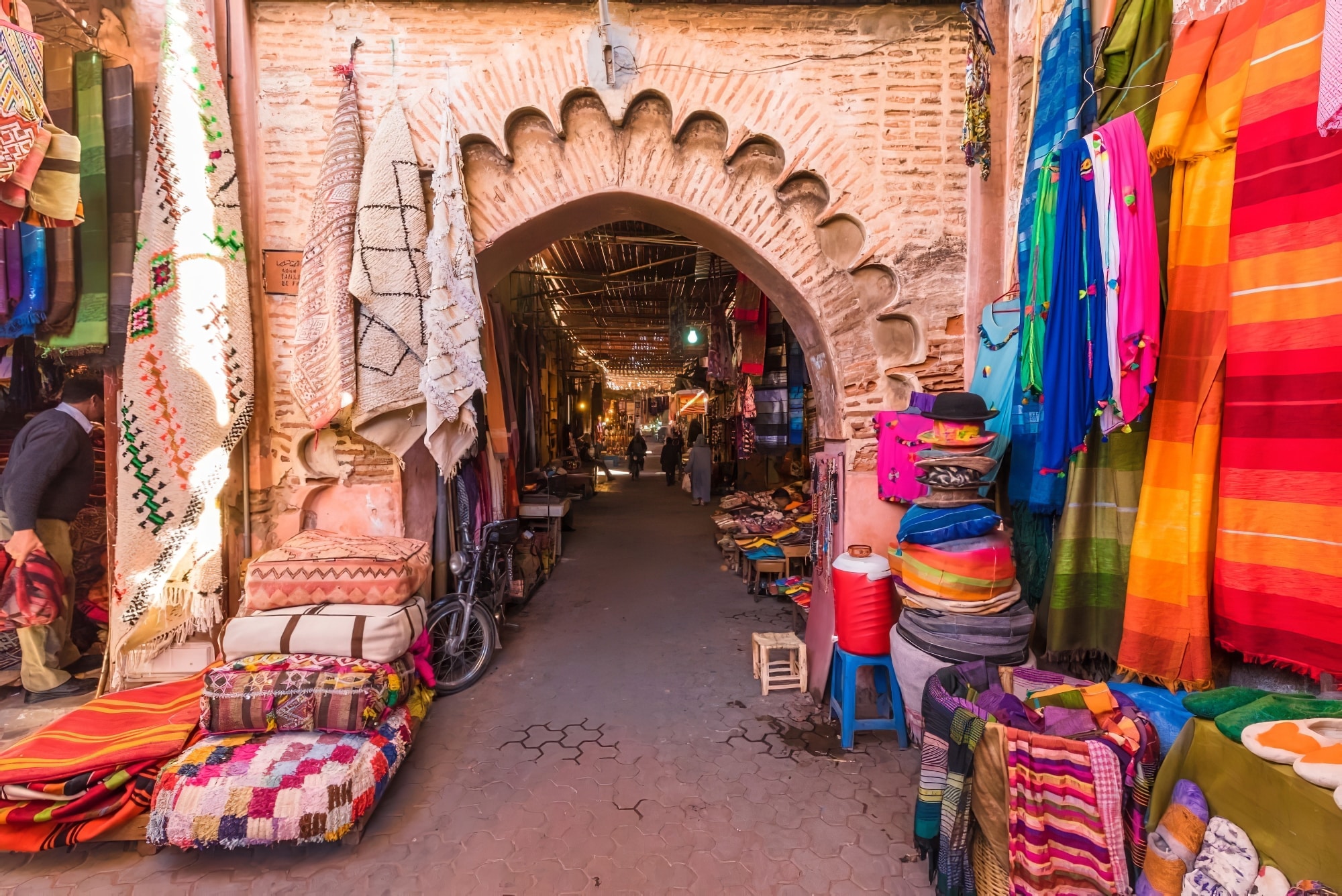A Marrakech historical tour with Morocco Tourist Guide is not just a journey through its streets but a travel back in time, where every monument, square, and market tells a story of a bygone era. Marrakech, the enchanting city of Morocco, stands as a timeless testament to the country’s rich history, culture, and architectural marvels.
Marrakech Historical Tour
Founded in 1062 by the Almoravids, this ancient city, also known as the Red City due to the blush-colored walls that surround it, has been a political, economic, and cultural hub for centuries. Our Marrakech historical tour begins with the Koutoubia Mosque, the most significant mosque in Marrakech and a landmark of Islamic architecture.
Constructed in the 12th century during the reign of the Almohad Caliphate, its minaret stands as a towering guide for travelers. It is not just a religious site but a symbol of the city’s historical significance and architectural ingenuity. The mosque’s design, with its intricate tile work, arches, and carvings, has influenced Andalusian and Moroccan architecture for centuries.
No Marrakech historical tour would be complete without visiting Jemaa El Fna, the bustling square at the heart of the city. This UNESCO World Heritage site is more than just a marketplace, but a living museum of Moroccan culture. Historically, it was a place of public executions, but today, it thrives with life, offering a glimpse into the traditional Moroccan way of life.
The place is enchanting thanks to its storytellers, musicians, snake charmers, and food vendors. As night falls, the square transforms into a massive open-air dining area, showcasing the rich culinary traditions of Morocco. Next, we explore the Bahia Palace, a masterpiece of Moroccan architecture and Islamic art.
Built in the late 19th century, this palace was intended to capture the essence of Islamic and Moroccan styles. With its expansive gardens, stunning tile work, intricate carvings, and reflective water features, the palace offers to our Marrakech historical tour a serene glimpse into the opulent lives of Morocco’s past rulers.
The name Bahia translates to brilliance, reflecting the palace’s beauty and the ambition of its creator, Si Moussa, grand vizier of the sultan. Hidden away behind high walls, the Saadian Tombs are one of Marrakech’s most treasured secrets. Rediscovered in 1917, these tombs date back to the time of Sultan Ahmad al-Mansur (1578-1603) and serve as a final resting place for members of the Saadi Dynasty.
A highlight of our Marrakech historical tour, these tombs are renowned for their decorative tiles, Arabic script, and intricate carvings, epitomizing the artistic excellence of the Saadian period. The Medersa Ben Youssef, once the largest Islamic college in North Africa, showcases the importance of education and religion in Moroccan history.
Built in the 14th century and expanded in the 16th century, this medersa is a stunning example of Moroccan architecture, with its detailed tile work, elegant arches, and an imposing entrance. The medersa was a home for students of Islamic law and offered insights into the scholarly life of the past.
Wandering through the traditional markets of Marrakech is like navigating the veins of the city’s history. Dedicated to a specific craft like textiles, spices, jewelry, and leather, each have been the lifeblood of Marrakech’s economy for centuries. They offer our Marrakech historical tour a vivid snapshot of the city’s social and economic history, showcasing the skills and vibrancy of its artisans.
Although not as ancient as other sites, the Majorelle Garden is a significant part of Marrakech’s history. Created by French painter Jacques Majorelle in the 1920s and later restored by fashion designer Yves Saint Laurent, the garden is a tranquil haven of exotic plants and vibrant colors. It stands as a symbol of the city’s colonial past and its ongoing allure to artists and creatives from around the world.
A Marrakech historical tour is an immersive experience that transports you through the ages, from the city’s founding in the 11th century to its present-day status as a cultural and tourist hub. Each monument, square, and alleyway has its own story, contributing to the rich tapestry of history that makes Marrakech a unique destination.
The city is not just a place to visit but a living history lesson, offering insights into the complexities of Moroccan culture, architecture, and tradition. As you walk through the streets of Marrakech, you walk through time, encountering the legacies of dynasties, the spirit of the people, and the enduring beauty of Moroccan heritage.





